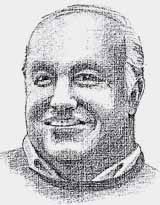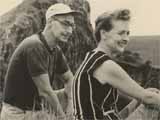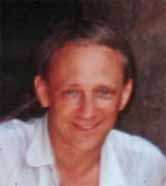Gertrude Duby Blom (1901-1993)

Gertrude Duby Blom and her Husband Franz Blom
Gertrude Duby Blom was born and raised in Switzerland. Although she studied horticulture, her main interests were in journalism and social activism, which she pursued while traveling around Europe. In 1941, she left Europe for New York and then Mexico. In Mexico, Gertrude continued her work as a journalist and also became interested in documentary photography, reporting on female factory workers and women involved with the Mexican revolution. In 1942, she made an expedition to the Lacandon forest. It was here that Gertrude and her husband Franz met the Lacandon and became interested in conservation of the rainforest (Na Bolom Cultural Centre 2004).
Gertrude was most well-known for her photography and her environmental activism. She was inducted into the "Global 500" of the United Nations. This award is presented by the United Nations Environmental Programme (UNEP) to individuals or organizations for their outstanding achievement in the protection and improvement of the environment (Na Bolom Cultural Centre 2004; UNEP 2006).
In addition, Gertrude and her husband Franz founded a Mexican based non-profit, non-governmental organization in 1951 called the Na Bolom Cultural Center, meaning House of the Jaguar. It is dedicated to research and activism related to the state of indigenous communities, conservation of the environment and sustainable development. Part of the Na Bolom Cultural Center also includes a museum highlighting the Lacandon, archaeology in Chiapas, and personal artifacts from the life of Gertrude Blom (Na Bolom Cultural Centre 2004).
Please see the bibliography section for a list of publications by Gertrude Duby Blom on the Lacandon.
Robert Bruce (1934-1997)
Robert Bruce was an anthropologist and linguist who dedicated his accomplished academic career to studying the Lacandon people. He attended the University of Oklahoma in the late 1950s, where he began his anthropological study of the Lacandon. He was attracted to the Lacandon because they were one of the few Mayan groups that still practiced the indigenous Maya religion. In 1957, he was introduced to Chan K'in Viejo, the community leader of the Lacandon. Chan K'in Viejo taught Robert Bruce the Lacandon language, sparking a friendship that lasted four decades. Robert was especially interested in Lacandon religious practices and dream interpretation. In addition to his anthropological and linguistic studies at the University of Oklahoma and later at the National Institute of Anthropology and History in Mexico City, he also spent significant amounts of time living among the Lacandon, adopting the traditional clothing, hair, and general lifestyle (Borhegyi 1965; Bruce and Perera 1982:2-4; Maykuth 1994; Hach Winik 2005).
Please see the bibliography section for a list of publications by Robert Bruce on the Lacandon.
Edmund Elsner (1941-present)

Edmund Elsner
(Scher Thomae 1997)
Ed Elsner was born in Chicago in 1941, but spent most of his childhood in Wisconsin. Throughout his childhood he developed an interest in the Native Americans of North, Central, and South Americas, and hoped to travel abroad someday. During his time at college, Ed contracted polio, which left him confined to a wheelchair, but he returned to school and graduated from the University of Illinois at Urbana-Champaign with a major in English (Scher Thomae 1997:15).
After graduation he began working for a publishing company but never lost sight of his desire to travel to Central and South America. In 1964, he learned about a teaching program sponsored through the U.S. Information Service that would take him to Popayano, Colombia. Within the year, he was fluent in Spanish and eager to visit the Native peoples he had read about. On his first trip to the Amazon he spent six weeks living with the people and traveling along the river. He then moved to Colombia and lived there for 12 years before returning to Illinois with his family. He worked for the next 10 years in the field of special education, and he started the first college-level program in Illinois to teach adults with learning disabilities. In the late 1980s, with increasing concerns about deforestation of the rainforest, he decided to take his children to experience the beauty and significance of the rainforest and its people before it disappeared (Scher Thomae 1997:15-17; Elsner 1997:19).
Ed retired in 1994 and moved to a small village in Honduras with his third wife, and three of his youngest children. Through his countless journeys he has visited, lived with and collected many cultural artifacts from native peoples in North, Central, and South America, including the Lacandon Maya of Chiapas. Ed currently lives in Arizona (Scher Thomae 1997; McGovern 1992).
Robert Ritzenthaler (1911-1980)

Robert and Pat Ritzenthaler
Robert Ritzenthaler was born in Milwaukee, Wisconsin in 1911. He grew up in Wisconsin and obtained his Bachelor's and Master's Degrees from the University of Wisconsin-Madison. He went on to receive a Ph.D. in Anthropology from Columbia University in 1950. He worked at the Milwaukee Public Museum throughout his very accomplished career, which started as an aide there in 1938. From 1945 to his retirement in 1972, he was an Anthropology Curator at the Milwaukee Public Museum. He remained very active at the museum after his retirement as a Curator Emeritus until his death in 1980 (Journal Sentinel; Hazlett 1977:296; Oestreich Lurie 1980; Oestreich Lurie 1981).
Dr. Ritzenthaler was well known for his contributions to Midwestern archaeology, specifically the Old Copper Culture of Wisconsin, publishing several books and articles on the subject. He also traveled extensively with his wife, conducting field studies all over the world including the American Midwest and Southwest, Micronesia, Mexico, Guatemala, Indonesia, and Cameroon (Journal Sentinel; Hazlett 1977:296; Oestreich Lurie 1980; Oestreich Lurie 1981).
He was a true generalist in the field, alternating between archaeological and ethnographic investigations of living peoples. His ethnographic field studies included work with the Oneida Indians of Wisconsin, Wisconsin Potawatomi, the Mexican Kickapoo, Hopi, Bafut peoples in Cameroon, and the Lacandon of Mexico (Journal Sentinel; Hazlett 1977:296; Oestreich Lurie 1980; Oestreich Lurie 1981).
Throughout his career he added many items to the collections at the Milwaukee Public Museum and helped to develop many of the exhibits. He published numerous articles in the Milwaukee Public Museum Bulletins and LORE, as well as the American Anthropologist, American Antiquity, and 53 articles in the Wisconsin Archaeologist. He was devoted to his work as an anthropologist and museum curator, saying that it was the nature of the museum field that allowed him to explore a wide range of anthropological research and collecting endeavors (Journal Sentinel; Hazlett 1977:296; Oestreich Lurie 1980; Oestreich Lurie 1981).
Peter Thornquist (1953-present)

Peter Thornquist
Peter Thornquist was born in 1953 in Minneapolis, Minnesota but spent the majority of his childhood in Milwaukee, Wisconsin. He went to the University of Wisconsin-Milwaukee as an undergraduate, receiving his Bachelor's degree in Anthropology and Museum Studies in 1976. Peter always had an interest in the archaeology of Central America, especially the Maya civilization. In 1973, while traveling through Mexico visiting various Maya archaeological sites, he serendipitously met a Lacandon man, initiating a friendship that lasts to this day. As the story goes, Peter was traveling on a shoestring and was lost in the jungle when a Lacandon named Joaquin Trujillo (the community leader for Mensabäk) crossed his path. Joaquin took him back to his village where he spent a short while living and getting to know the Lacandon (Thornquist 2006: pers. comm.).
Peter traveled back to visit the Lacandon frequently during the 1970s. In 1979, he decided to volunteer on an archaeological dig in Belize. He took this opportunity to visit the Lacandon once again. This time, however, he came with funds from the Milwaukee Public Museum to purchase Lacandon artifacts for the museum's collection. Today the majority of the objects in the Lacandon Collection are from Peter's expeditions. He discussed with community leaders his interest in collecting a broad range of artifacts and they were very supportive and excited about the museum's interest in their culture (Thornquist 2006: pers. comm.).
Peter later worked for seven years as the executive director of the Wisconsin-Nicaragua Partners Foreign Aid to Latin America, a private voluntary organization that has foreign aid development projects in Nicaragua. He later completed medical school and became the medical director of the Milwaukee International Health Training Center (now Center for International Health). Although he traveled extensively in this position, it took him far from Central America. Today, he practices internal medicine in Milwaukee and visits the Lacandon frequently (Thornquist 2006: pers. comm.).

